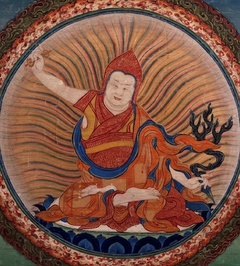Guru Yoga Series
English (76) | Deutsch (5) | Español (6) | Français (16) | Italiano (2) | Nederlands (1) | Português (1) | 中文 (7) | བོད་ཡིག (76)
A series of Guru Yoga (bla ma'i rnal 'byor) practices:
Amitābha
Atiśa Dīpaṃkara
Avalokiteśvara
Buddha Śākyamuni
Chatral Rinpoche
Dorje Tötreng Tsal
Dzogchen
Fifteenth Karmapa
Gampopa Sonam Rinchen
Garab Dorje
Gatön Ngawang Lekpa
Gesar
Guru Dewa Chenpo
Haribhadra
Jamyang Khyentse Chökyi Lodrö
Jamyang Loter Wangpo
Jigme Lingpa
by
Jigme Lingpa
Khenchen Jigme Phuntsok
Khyen Kong Chok Sum
Kurukullā
Lochen Chönyi Zangmo
Longchen Rabjam
Mañjuśrī
Marpa Chökyi Lodrö
Marpa, Milarepa & Gampopa
Milarepa
by
Shakya Shri
Mipham Rinpoche
Ngawang Samten Lodrö
Ngöndro
by
Sera Khandro
Padmasambhava
revealed by Jigme Lingpa
by
Shakya Shri
Pema Lingpa
Rongzom Chökyi Zangpo
Sakya Paṇḍita
Śavari
Sera Khandro
by
Sera Khandro
Smṛtijñānakīrti
Songtsen Gampo
Three Deities of Long Life
Three Mañjughoṣas
Trulshik Rinpoche
Tsongkhapa Lobzang Drakpa
Tulku Urgyen Rinpoche
Vajrasattva
by
Jigme Lingpa
